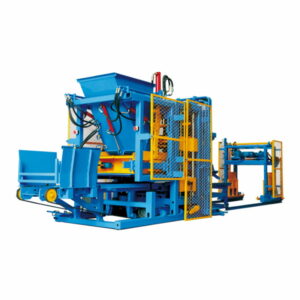Using a block maker machine offers several advantages over manual methods of block production. Here are some key benefits:
Increased Efficiency: Block maker machines are designed to automate and streamline the block production process. They can produce blocks at a much faster rate compared to manual methods, significantly increasing production efficiency. This is especially beneficial for large-scale projects that require a high volume of blocks.
Consistency and Accuracy: Block maker machines ensure consistent quality and accuracy in block production. The machine’s mechanisms, such as the mixing system and block forming mechanism, ensure that the raw materials are properly mixed and the blocks are formed with precise dimensions and shapes. This consistency helps in achieving uniformity in the blocks, resulting in better construction outcomes.
Time and Labor Savings: Using a block maker machine reduces the amount of manual labor required for block production. The machine handles tasks such as mixing, compacting, and shaping, which would otherwise need to be done manually. This saves time and reduces physical labor, allowing workers to focus on other aspects of the construction project.
Improved Block Strength and Durability: Block maker machines apply consistent pressure and compaction to the blocks, resulting in better block strength and durability. The controlled compression helps in achieving denser blocks with reduced voids, enhancing their load-bearing capacity and resistance to weathering and other environmental factors.
Versatility in Block Designs: Block maker machines often come with interchangeable moulds, allowing for the production of various block designs and sizes. This versatility enables customization according to specific project requirements, providing flexibility in block applications and design choices.
Ease of Operation: While block maker machines require trained operators, they are generally designed to be user-friendly. Modern machines often feature intuitive control panels that allow for easy adjustment of parameters and monitoring of the production process. This simplicity in operation reduces the learning curve and facilitates efficient use of the machine.
Cost Savings: Although the initial investment in a block maker machine can be significant, it can lead to long-term cost savings. The increased production efficiency, reduced labor requirements, and improved block quality can contribute to cost savings over time, making the machine a cost-effective investment.
It’s important to note that the specific advantages may vary depending on the machine model and manufacturer. Additionally, manual methods may still be suitable for smaller projects or in situations where machinery is not readily available.
How can I determine if using a block maker machine is cost-effective for my construction project?
Determining the cost-effectiveness of using a block maker machine for your construction project involves considering several factors.
Here are some steps you can take to evaluate the feasibility and cost-effectiveness:
Assess Project Scale and Volume: Evaluate the scale and volume of blocks required for your construction project. Block maker machines are more cost-effective for projects that require a significant number of blocks. If your project involves a small number of blocks, block maker machine manufacturers it may be more economical to consider manual methods or outsourcing block production.
Calculate Labor Costs: Compare the labor costs associated with manual block production versus using a block maker machine. Consider the time required for manual labor, the number of workers involved, and the associated wages or labor rates. Calculate the labor costs for both scenarios and compare them to estimate potential savings.
Analyze Material Costs: Evaluate the cost of raw materials needed for block production, including cement, sand, aggregate, and additives. Determine if there are any significant differences in material costs when using a block maker machine compared to manual methods. Consider factors like material wastage and consistency in material usage with the machine.
Factor in Machine Costs: Consider the initial investment cost of purchasing or renting a block maker machine. Research different machine models and their prices, including any additional costs such as delivery, installation, or maintenance. Compare this cost with the potential savings in labor costs and increased efficiency to determine the machine’s payback period.
Assess Time Savings: Analyze the time savings offered by a block maker machine. Calculate the time required for manual block production and compare it to the estimated time using a machine. Consider the impact of faster block production on project timelines and any potential cost savings associated with reduced project duration.
Evaluate Quality and Durability: Consider the quality and durability of blocks produced by a block maker machine compared to manual methods. Higher-quality blocks may result in reduced maintenance costs or improved structural integrity, which can impact the overall cost-effectiveness of the project.
Consider Long-Term Benefits: Look beyond immediate cost savings and consider the long-term benefits of using a block maker machine. These can include increased project efficiency, reduced labor dependency, enhanced block quality, and the potential to take on larger projects in the future.
Seek Expert Advice: Consult with industry professionals, such as contractors or construction equipment suppliers, to get their insights and recommendations. They can provide valuable guidance based on their experience and knowledge of similar projects.
By carefully assessing these factors and conducting a cost analysis, you can make an informed decision about the cost-effectiveness of using a block maker machine for your construction project.
